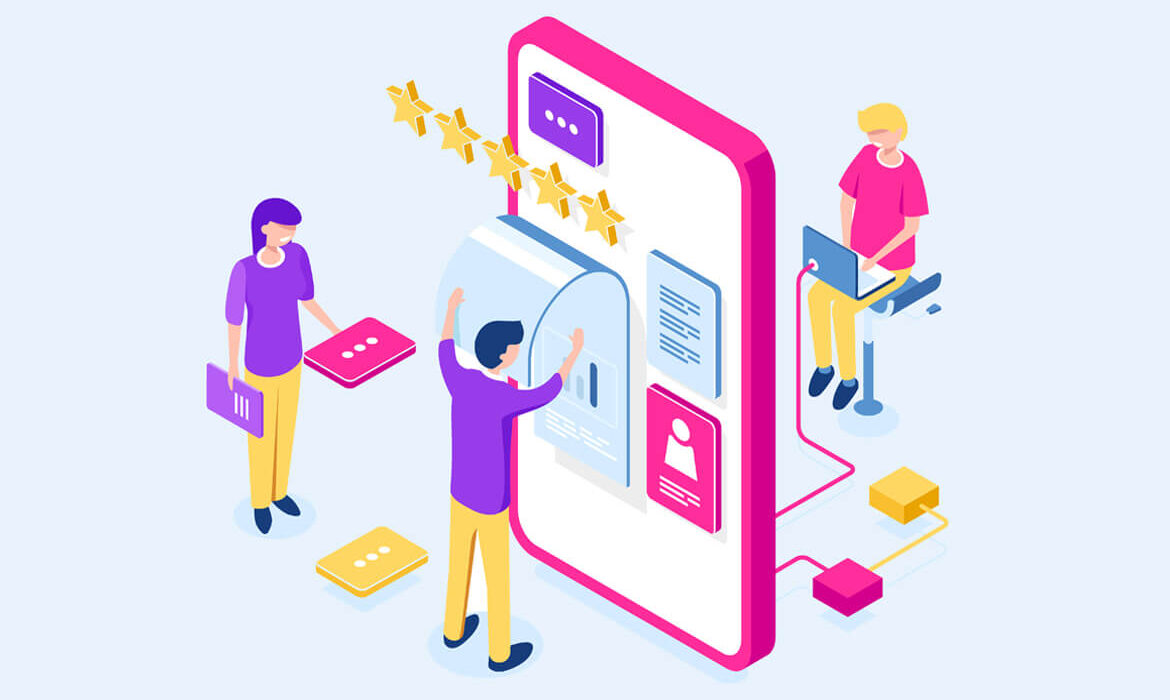- +1 (717) 710 6577
- info@digitalmartlab.com
2024-05-06by web.digitalmartlab
Web Design Development
Digital technology has made our world more transparent and interconnected, posing new challenges and opportunities for every business. A holistic, user-centric perspective is what truly sets one apart.

How We Work
Requirement Analysis:
– Conduct a detailed meeting with the client to understand their needs and objectives.
– Use Digital Mart Lab’s proprietary tools to analyze the target audience and market trends.
– Define the website’s purpose and key performance indicators (KPIs).
Project Scope:
– Outline the project scope and deliverables using Digital Mart Lab’s project management framework.
– Create a detailed project timeline with milestones and deadlines.
– Set a budget for the project, considering Digital Mart Lab’s pricing models.
Design
Wireframing
– Use Digital Mart Lab’s design tools to develop wireframes that outline the website’s structure and layout.
– Focus on user experience (UX) and navigation flow, leveraging Digital Mart Lab’s UX research data.
Mockups
– Create high-fidelity mockups using Adobe XD, Sketch, Figma, or other preferred tools.
– Incorporate Digital Mart Lab’s design standards and brand guidelines.
Feedback and Revision
– Present the mockups to the client for feedback using Digital Mart Lab’s collaborative review platform.
– Make necessary revisions based on client input, utilizing Digital Mart Lab’s iterative design process.
Development
Front-End Development
– Convert design mockups into HTML, CSS, and JavaScript using Digital Mart Lab’s development standards.
– Ensure the website is responsive and works across different devices and browsers.
Back-End Development
– Set up the server, database, and application logic using Digital Mart Lab’s preferred technologies and frameworks.
– Develop features such as user authentication, data processing, and content management systems (CMS) tailored to Digital Mart Lab’s expertise.
Integration
– Integrate front-end and back-end components using Digital Mart Lab’s integration protocols.
– Ensure smooth communication between client-side and server-side components.
Testing
Functional Testing
– Test all website functionalities using Digital Mart Lab’s automated testing tools.
– Check for bugs and issues, ensuring compliance with Digital Mart Lab’s quality standards.
Usability Testing
– Ensure the website is user-friendly and intuitive by conducting usability tests with real users.
– Gather feedback using Digital Mart Lab’s user testing methodologies.
Performance Testing
– Test the website’s loading speed and performance under different conditions using Digital Mart Lab’s performance testing tools.
– Optimize for faster loading times.
Compatibility Testing
– Ensure the website works correctly on various devices, browsers, and operating systems using Digital Mart Lab’s compatibility testing suite.
Launch
Pre-Launch Checklist
– Verify that all features are working correctly using Digital Mart Lab’s comprehensive pre-launch checklist.
– Ensure all content is proofread and accurate.
– Set up analytics and monitoring tools.
Deployment
– Move the website from the development environment to the live server using Digital Mart Lab’s deployment protocols.
– Conduct a final test to ensure everything is functioning properly.
Maintenance
Regular Updates
– Update content, software, and security patches regularly using Digital Mart Lab’s maintenance schedule.
– Monitor website performance and fix any issues that arise using Digital Mart Lab’s monitoring tools.
Backup
– Regularly back up the website data to prevent data loss using Digital Mart Lab’s backup solutions.
SEO and Analytics
– Monitor and improve the website’s search engine optimization (SEO) using Digital Mart Lab’s SEO tools.
– Use analytics to track user behavior and make data-driven improvements.
2024-05-06by web.digitalmartlab
People Meet AI

How We Work
Creating a “People Meet AI” platform with Digital Mart Lab involves a comprehensive web design and development process that leverages Digital Mart Lab’s strengths and expertise. Here’s an adapted version of the full process:
1. Planning
Requirement Analysis
– Conduct a detailed meeting with the client to understand their needs and objectives for the “People Meet AI” platform.
– Use Digital Mart Lab’s proprietary tools to analyze the target audience, market trends, and potential competitors.
– Define the platform’s purpose, key features, and key performance indicators (KPIs).
Project Scope
– Outline the project scope and deliverables using Digital Mart Lab’s project management framework.
– Create a detailed project timeline with milestones and deadlines, including research, design, development, testing, and launch phases.
– Set a budget for the project, considering Digital Mart Lab’s pricing models and resource allocation.
2. Design
Wireframing
– Use Digital Mart Lab’s design tools to develop wireframes that outline the platform’s structure and layout, focusing on user experience (UX) and AI integration points.
– Define user journeys, navigation flow, and key interaction points.
Mockups
– Create high-fidelity mockups using tools like Adobe XD, Sketch, Figma, or others preferred by Digital Mart Lab.
– Incorporate Digital Mart Lab’s design standards, brand guidelines, and ensure that the AI interactions are intuitive and seamless.
Feedback and Revision
– Present the mockups to the client for feedback using Digital Mart Lab’s collaborative review platform.
– Make necessary revisions based on client input, utilizing Digital Mart Lab’s iterative design process to refine the design and functionality.
3. Development
Front-End Development
– Convert design mockups into HTML, CSS, and JavaScript using Digital Mart Lab’s development standards, ensuring a responsive and cross-browser compatible interface.
– Implement AI interaction points and user interfaces for AI-driven features.
Back-End Development
– Set up the server, database, and application logic using Digital Mart Lab’s preferred technologies and frameworks.
– Develop AI features such as chatbots, recommendation engines, and data processing modules, ensuring they integrate smoothly with the platform.
Integration
– Integrate front-end and back-end components using Digital Mart Lab’s integration protocols.
– Ensure seamless communication between client-side and server-side components, including real-time data exchange for AI functionalities.
4. Testing
Functional Testing
– Test all platform functionalities using Digital Mart Lab’s automated testing tools to ensure they work as intended.
– Check for bugs and issues, ensuring compliance with Digital Mart Lab’s quality standards.
Usability Testing
– Conduct usability tests with real users to ensure the platform is user-friendly and intuitive, focusing on AI interactions.
– Gather feedback using Digital Mart Lab’s user testing methodologies and make necessary adjustments.
Performance Testing
– Test the platform’s loading speed, responsiveness, and performance under different conditions using Digital Mart Lab’s performance testing tools.
– Optimize AI algorithms for efficiency and speed.
Compatibility Testing
– Ensure the platform works correctly on various devices, browsers, and operating systems using Digital Mart Lab’s compatibility testing suite.
5. Launch
Pre-Launch Checklist
– Verify that all features are working correctly using Digital Mart Lab’s comprehensive pre-launch checklist.
– Ensure all content is proofread and accurate.
– Set up analytics and monitoring tools to track user engagement and platform performance.
Deployment
– Move the platform from the development environment to the live server using Digital Mart Lab’s deployment protocols.
– Conduct a final test to ensure everything is functioning properly and that AI features are performing as expected.
6. Maintenance
Regular Updates
– Update content, software, and security patches regularly using Digital Mart Lab’s maintenance schedule.
– Monitor platform performance and fix any issues that arise using Digital Mart Lab’s monitoring tools.
Backup
– Regularly back up the platform data to prevent data loss using Digital Mart Lab’s backup solutions.
SEO and Analytics
– Monitor and improve the platform’s search engine optimization (SEO) using Digital Mart Lab’s SEO tools.
– Use analytics to track user behavior, AI performance, and make data-driven improvements to enhance user experience and AI functionality.
2023-05-08by web.digitalmartlab
Technical Agency

A technical agency is a specialized organization that provides expertise and services in various areas of technology to help businesses achieve their goals. These agencies typically offer a wide range of services, including software development, IT consulting, digital transformation, cybersecurity, and data analytics. They work with clients from various industries, providing tailored solutions to meet specific needs and challenges.
Project Name
Technical Agency
Our Role
SEO Optimization
Tags

Key Functions and Services
Software Development
Technical agencies develop custom software solutions, mobile applications, and web applications. They use modern programming languages and frameworks to create scalable, efficient, and user-friendly software that meets the unique requirements of their clients.
IT Consulting
These agencies provide strategic advice on technology adoption, IT infrastructure, and digital transformation. They help organizations optimize their technology stack, improve operational efficiency, and stay competitive in the market.
Cybersecurity
Protecting sensitive data and ensuring the security of IT systems is a critical function of technical agencies. They offer services such as risk assessment, vulnerability testing, threat monitoring, and incident response to safeguard their clients’ digital assets.
Data Analytics
Technical agencies leverage big data and analytics to help businesses make informed decisions. They collect, process, and analyze large volumes of data to extract valuable insights, enabling companies to improve their strategies, enhance customer experiences, and drive growth.
Digital Transformation
Agencies assist businesses in adopting new technologies and modernizing their operations. This includes migrating to cloud platforms, automating processes, and integrating digital tools to enhance productivity and innovation.
Benefits of Working with a Technical Agency
Expertise
Technical agencies have teams of highly skilled professionals with expertise in various technological domains. This ensures that clients receive top-notch solutions and services.
Cost-Effective
Hiring a technical agency can be more cost-effective than building an in-house team. Agencies provide access to a diverse skill set without the overhead costs associated with full-time employees.
Scalability
Agencies offer flexible solutions that can scale with the client’s business. Whether it’s expanding infrastructure or developing new features, technical agencies can adapt to changing needs.
2023-05-08by web.digitalmartlab
Agency Optimization

From the designers and engineers who are creating the next generation of web and mobile experiences, to anyone putting a website together for the first time. We provide elegant solutions that set new standards for online publishing.
Project Name
Agency Optimization
Our Role
SEO Optimization
Tags

Agency Optimization Overview
Agency optimization involves enhancing the performance and efficiency of a company’s operations, with a particular focus on service delivery, resource management, and client satisfaction. This process is critical for agencies across various sectors, including marketing, advertising, digital, and technical agencies, to remain competitive and achieve sustainable growth.
Key Components of Agency Optimization
Operational Efficiency
Streamlining workflows and processes is central to agency optimization. This includes automating routine tasks, implementing project management tools, and refining internal communication channels. Efficient operations reduce redundancies, save time, and improve the overall productivity of the agency.
Resource Management
Effective allocation and utilization of resources—such as human talent, technology, and budget—are vital. Agencies need to ensure that they are maximizing the potential of their team members by aligning their skills with appropriate tasks and projects. Additionally, managing financial resources wisely helps in optimizing costs and increasing profitability.
Client Relationship Management (CRM)
Strong relationships with clients are the cornerstone of a successful agency. Implementing robust CRM systems helps maintain comprehensive client profiles, track interactions, and manage client feedback. This allows agencies to provide personalized services, anticipate client needs, and enhance client satisfaction.
Performance Metrics and Analytics
Measuring and analyzing performance metrics is crucial for identifying areas of improvement. Key performance indicators (KPIs) such as project completion rates, client retention rates, and return on investment (ROI) provide insights into the agency’s performance. Utilizing analytics tools helps in making data-driven decisions and optimizing strategies for better outcomes.
Continuous Improvement
Agency optimization is an ongoing process. Agencies must foster a culture of continuous improvement by regularly reviewing processes, seeking feedback from clients and employees, and staying updated with industry trends. This proactive approach ensures that the agency remains agile and can adapt to changing market conditions.
Benefits of Agency Optimization
Increased Productivity
Streamlined processes and better resource management lead to higher productivity, enabling agencies to handle more projects and deliver superior results within shorter timeframes.
Enhanced Client Satisfaction
Optimized operations and personalized services improve the client experience, leading to higher satisfaction and loyalty, which in turn can result in repeat business and referrals.
Cost Efficiency
By eliminating inefficiencies and optimizing resource use, agencies can reduce operational costs, which contributes to higher profitability and the ability to invest in growth initiatives.
Competitive Advantage
An optimized agency is more agile, innovative, and responsive to market demands, providing a competitive edge over less efficient competitors.
In summary, agency optimization is a strategic approach to improving an agency’s efficiency, effectiveness, and competitiveness. Agencies can achieve sustainable growth and long-term success by focusing on operational efficiency, resource management, client relationships, performance metrics, and continuous improvement.
2021-07-15by web.digitalmartlab
SEO Optimization

How We Work
Developing a full SEO optimization process with Digital Mart Lab involves several key steps, ranging from initial research and planning to implementation and ongoing monitoring. Here’s a detailed overview of the process:
1. Initial Consultation and Goal Setting
Understand Business Objectives Discuss with Digital Mart Lab to understand your business goals, target audience, and key performance indicators (KPIs).
Set Clear SEO Goals Define what you aim to achieve with SEO (e.g., increased organic traffic, higher search rankings, improved conversion rates).
2. Website Audit
Technical SEO Audit Evaluate the website’s technical aspects like site speed, mobile-friendliness, crawlability, and indexability.
-On-Page SEO Audit Review on-page elements such as meta tags, headers, content quality, keyword usage, and internal linking.
Off-Page SEO Audit Assess the website’s backlink profile, social signals, and overall online presence.
Keyword Research
Identify Relevant Keywords Use tools like Google Keyword Planner, SEMrush, or Ahrefs to find keywords relevant to your business.
-Analyze Competitors Study competitors’ keyword strategies to identify gaps and opportunities.
Long-Tail Keywords Focus on long-tail keywords that have less competition and higher conversion potential.
Content Strategy
Create High-Quality Content Develop content that is valuable, relevant, and engaging for your target audience.
Optimize Existing Content Revise and update existing content to include targeted keywords and improve readability.
– **Content Calendar**: Plan a content calendar to ensure regular publication and promotion of new content.
On-Page SEO Optimization
Meta Tags Optimize title tags, meta descriptions, and header tags with target keywords.
URL Structure Ensure URLs are clean, descriptive, and include relevant keywords.
–Internal Linking Create a robust internal linking structure to enhance navigation and distribute link equity.
Technical SEO Implementation
Site Speed Optimization Improve site loading times by compressing images, using caching, and optimizing code.
Mobile Optimization Ensure the website is fully responsive and provides a good user experience on mobile devices.
–XML Sitemaps and Robots.txt Create and submit XML sitemaps and optimize the robots.txt file to guide search engines.
Off-Page SEO and Link Building
Backlink Strategy Develop a strategy for acquiring high-quality backlinks from authoritative sites.
Social Media Integration Promote content on social media platforms to increase visibility and drive traffic.
Guest Blogging Contribute guest posts to reputable blogs in your industry to gain backlinks and exposure.

2021-07-15by web.digitalmartlab
Technical SEO

Technical SEO refers to the optimization of a website’s infrastructure to enhance its search engine visibility and ensure it meets the technical requirements of modern search engines. This aspect of SEO focuses on improving the backend elements that affect a site’s performance, crawlability, and indexing, rather than content or link-building strategies.
Project Name
Technical SEO
Our Role
SEO Optimization
Tags

Key Elements of Technical SEO
Website Architecture: A well-structured website with a logical hierarchy and clear navigation makes it easier for search engines to crawl and index pages. This includes the use of XML sitemaps and a clean URL structure.
Crawlability: Ensuring that search engine bots can efficiently access and crawl the website is crucial. This involves managing the robots.txt file, avoiding duplicate content, and ensuring there are no crawl errors.
Page Speed: Fast-loading pages are critical for both user experience and search engine rankings. Optimizing images, leveraging browser caching, and minimizing JavaScript and CSS files contribute to better page speed.
Mobile-Friendliness: With the increasing use of mobile devices, having a responsive design that works seamlessly across all screen sizes is essential. Mobile-first indexing by Google makes this a priority.
Security: Implementing HTTPS encryption ensures data security, which is a ranking factor for search engines. A secure site builds trust with users and search engines alike.
Benefits of Technical SEO
- Improved Search Engine Rankings: A technically sound website is more likely to rank higher in search engine results.
- Enhanced User Experience: Fast, mobile-friendly, and secure websites provide a better experience, reducing bounce rates and increasing engagement.
- Better Crawlability and Indexing: Ensures that all important pages are indexed by search engines, maximizing visibility.
2021-07-11by web.digitalmartlab
Content Marketing

From the designers and engineers who are creating the next generation of web and mobile experiences, to anyone putting a website together for the first time. We provide elegant solutions that set new standards for online publishing.

Content Marketing Overview
Content marketing is a strategic approach focused on creating, distributing, and promoting valuable, relevant, and consistent content to attract and retain a clearly defined audience. The ultimate goal is to drive profitable customer action by building trust and establishing authority within the industry.
Key Components of Content Marketing
Content Creation
Developing high-quality content that addresses the needs and interests of the target audience. This includes blog posts, articles, videos, infographics, podcasts, and social media posts.
Content Distribution
Sharing content across various channels to reach a broader audience. This involves using owned media (websites, blogs), earned media (guest posts, press coverage), and paid media (ads, sponsored content).
SEO Integration
Optimizing content with relevant keywords and following best SEO practices to ensure it ranks well on search engines and reaches the target audience organically.
Audience Engagement
Encouraging interaction and engagement through comments, shares, and feedback. This helps in building a community around the brand and fostering loyalty.
Benefits of Content Marketing
Increased Brand Awareness
Quality content helps in establishing a brand’s presence and recognition in the market.
Better Customer Relationships
Providing valuable information builds trust and positions the brand as an industry authority.
Higher Conversion Rates
Engaging and informative content can guide prospects through the buyer’s journey, leading to increased conversions.
2021-06-14by web.digitalmartlab
Online Media Management

From the designers and engineers who are creating the next generation of web and mobile experiences, to anyone putting a website together for the first time. We provide elegant solutions that set new standards for online publishing.
Project Name
Online Media Management
Our Role
SEO Optimization
Tags

Online Media Management Overview with Digital Mart Lab
Online media management involves strategically planning, creating, distributing, and analyzing digital content across various online platforms to enhance brand visibility, engagement, and conversion rates. Digital Mart Lab specializes in providing comprehensive online media management services tailored to meet the unique needs of businesses in the digital age.
Key Services of Digital Mart Lab
Content Creation and Curation
Digital Mart Lab develops high-quality, engaging content, including blog posts, videos, infographics, and social media updates. They ensure content aligns with brand messaging and resonates with the target audience.
Social Media Management
Managing social media profiles across platforms like Facebook, Instagram, Twitter, and LinkedIn. This includes scheduling posts, responding to comments, and engaging with followers to build a strong online community.
SEO and SEM
Optimizing content for search engines (SEO) and managing paid search campaigns (SEM) to increase organic traffic and maximize ROI from digital marketing efforts.
Analytics and Reporting
Monitoring and analyzing performance metrics using advanced tools to track the success of online media campaigns. Digital Mart Lab provides detailed reports and insights to guide future strategies.
Benefits of Online Media Management with Digital Mart Lab
Enhanced Brand Visibility
Effective management of online media channels boosts brand awareness and reach.
Increased Engagement
Engaging content and active social media presence foster stronger connections with the audience.
Improved ROI
Data-driven strategies and targeted campaigns lead to higher conversion rates and better returns on investment.










